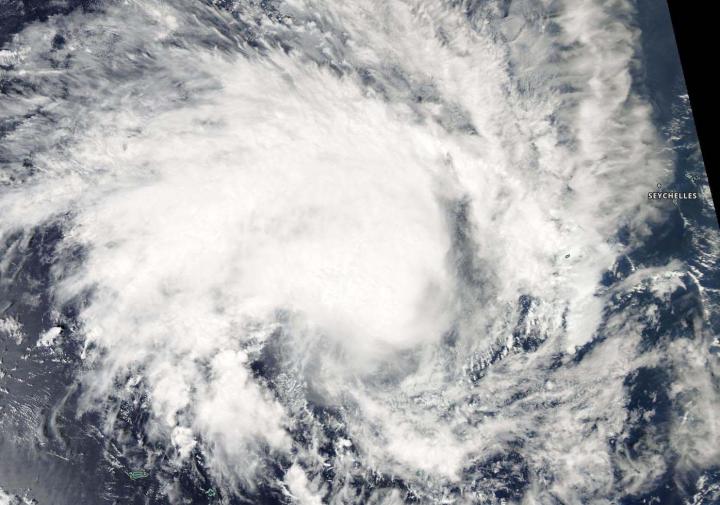
Credit: Credit: NASA Worldview, Earth Observing System Data and Information System (EOSDIS)
NASA’s Aqua satellite captured an image of Tropical cyclone 02S and the visible image showed that the storm was getting better organized.
Tropical Cyclone 02A formed as a tropical depression in the Southern Indian Ocean on Dec. 4 and strengthened into a tropical storm.
On Dec. 5, the Moderate Resolution Imaging Spectroradiometer or MODIS instrument that flies aboard NASA’s Aqua satellite provided a visible image of 02S. The MODIS image showed powerful thunderstorms circling the center of circulation and a large, thick band of thunderstorms feeding into the center from the west.
The shape of the storm is a clue to forecasters that a storm is either strengthening or weakening. If a storm takes on a more rounded shape it is getting more organized and strengthening. Conversely, if it becomes less rounded or elongated, it is a sign the storm is weakening. 02S appeared more circular than it did 24 hours before, indicating it was strengthening and consolidating.
On Dec. 5 at 4 a.m. EST (0900 UTC), Tropical Cyclone 02S was located near latitude 6.7 degrees south and longitude 50.9 degrees east, about 867 miles north-northwest of St Denis, La Reunion Island. 02S is moving west-southwest and has maximum sustained winds 40 knots (46 mph/74 kph).
Tropical Cyclone 02S is forecast to turn to the south-southwest. The storm is forecast to make landfall in northwestern Madagascar after five days.
NASA’s Aqua satellite is one in a fleet of NASA satellites that provide data for hurricane research.
Tropical cyclones and hurricanes are the most powerful weather events on Earth. NASA’s expertise in space and scientific exploration contributes to essential services provided to the American people by other federal agencies, such as hurricane weather forecasting.
###
By Rob Gutro
NASA’s Goddard Space Flight Center
Media Contact
Rob Gutro
[email protected]
Original Source
https:/




